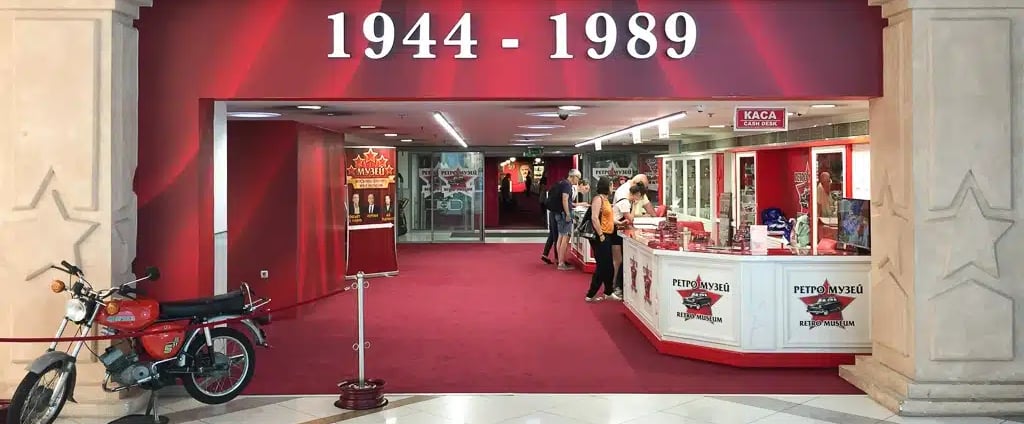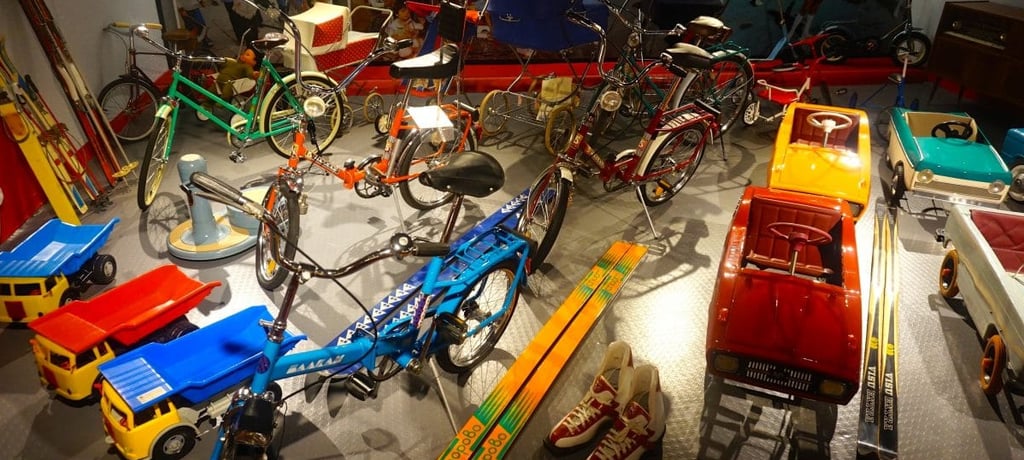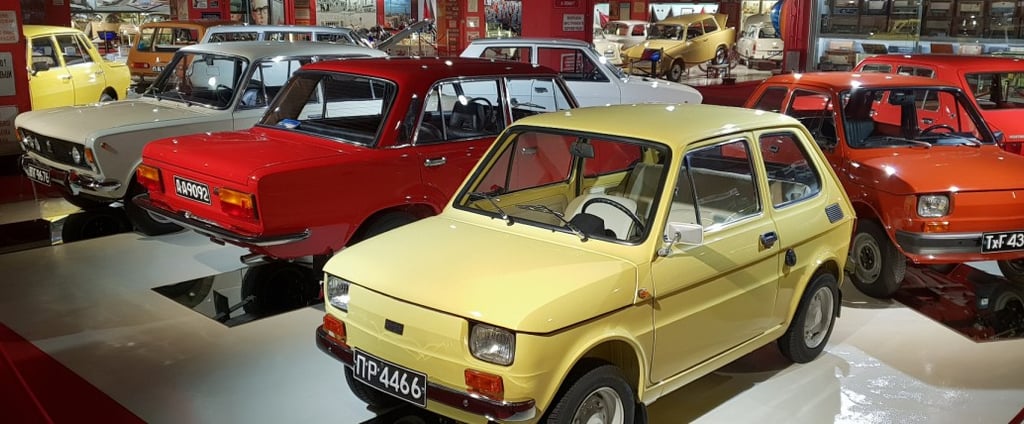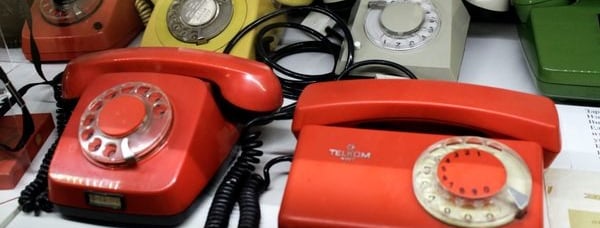Retro Museum - Varna
Step into a world frozen between nostalgia and history, where cars, household items, and wax figures tell the story of life behind the Iron Curtain in Bulgaria.


An Unexpected Museum in a Modern Mall
Tucked inside the vast Grand Mall of Varna lies an extraordinary cultural discovery. It’s not part of a historical district or a purpose-built exhibition hall—it’s a retro museum that has brought the socialist past flooding back into Bulgaria’s third-largest city. Opened to the public on May 1, 2015, the Retro Museum is said to be the first of its kind in the country and stands out for its authenticity and scale. It sprawls across roughly 4,000 sqm within the mall’s parking level, juxtaposing consumer nostalgia with commercial modernity. What on paper sounds like a quirky contrast evolves in practice into a moving experience. The immaculately restored vehicles, wax figures of familiar faces, and crammed shelves of everyday objects form a living historical archive, preserving a recent era that continues to influence and haunt the Bulgarian collective memory.
Origins and Vision: A Collector’s Passion Project
The Retro Museum is the vision of Tsvetan Atanasov, a local entrepreneur and vintage vehicle enthusiast. He began collecting socialist-era cars—brands like Volga, Moskvich, Skoda, Trabant, Wartburg, and the star, the Soviet Chaika GAZ‑13 limousine once favored by Politburo dignitaries. Atanasov’s intent was more than that of a private collector: he wanted these artifacts to be seen and experienced by the public. Choosing Grand Mall as the venue, he harnessed commercial foot traffic to introduce a broader audience to a cultural moment many Bulgarians had lived through, and younger generations only heard stories about.
Over time, the museum has grown. From its first half-century of cars, it now showcases over sixty vehicles, complemented by motorcycles like the East German Simson and Bulgarian Balkan. The collection extends to everyday items: electronics, televisions, telephones, household appliances, toys, grooming products, even cigarette brands. It is a sociological sweep, not only preserving objects but preserving an entire epoch.
Practical Details for Visitors
Located at 2 Andrei Saharov Street within Grand Mall, the museum occupies the parking garage’s first level. It is accessible via public buses (Routes 18, 18A, 22, 41, 148, 409) to the “Avtogara” stop, just outside the mall entrance . The address is also easily reachable by car, with free parking available in the mall’s multi-level lot.
Opening hours vary by season. From January to March, the museum typically stays open from 10:00 to 21:00. From April through December, closing time is usually 19:00 or even 22:00 according to mall schedules Visit Varna. Some sources confirm daily operation from 10:00 to 22:00 year-round Varna City Card, while a Facebook notice states 10:00 to 20:00 Facebook. To ensure accuracy, it's best to check their Facebook page or website before visiting.
Admission is paid on-site or online. Standard prices are BGN 20 for adults, BGN 15 for children up to 18, and free for under‑6s . Some bundle deals or Varna City Card discounts may apply, reducing retro museum and wax museum fees.
Facilities include clean, accessible restrooms, free Wi-Fi, and a café nearby in the mall. A gift shop sells miniature car models, Soviet memorabilia, and vintage-inspired souvenirs. The museum is mostly wheelchair accessible, but tight aisles around cars may present occasional challenges. Staff are multilingual and often passionate about the collection, happy to share stories or allow brief photo sessions in some vehicles.
Visit the official website here: https://retromuseum.bg/en/
Global Significance Beyond Local Nostalgia
Although rooted in Bulgaria, the museum’s reach extends across the entire former Soviet sphere. Its vehicles and artifacts represent East Germany, Czechoslovakia, Poland, Yugoslavia, and the USSR. As one blogger noted, these were "mass-produced with indifference and mass-destroyed with the same indifference," underscoring how the museum preserves a "celebration of the acceptable, the tolerable, and the just-OK" in industrial culture.
While retro car museums exist elsewhere, few combine automotive devotion with such comprehensive household and cultural memorabilia. TripAdvisor recommends a two-hour visit to absorb the breadth of exhibit. Atlas Obscura points out the museum’s unique setting within a mall and lauds its scope as "one of the biggest collections of Soviet-era paraphernalia in Bulgaria. For anyone studying Cold War consumer culture, planned economies, or the Eastern Bloc’s social fabric, the museum functions as an anthropological site as much as a tourist destination.
Visitor Insights: Atmosphere, Engagement, Emotion
Visitor reviews describe the museum as “unexpectedly amazing.” The tactile, immersive walk-through fuels emotion. Some are moved to tears: one account tells of a daughter hugging a wax figure of her mother, actress Nevena Kokanova, overwhelmed by recognition Dnes. Many appreciate relative accessibility and family-friendliness; the museum is energetic, interactive, and suitable for children, encouraging tableaus of life rather than sterile display.
While some find the admission price (around 20 BGN for adults, 15 BGN for under-18s, free for under-6s) slightly steep compared with other local museums, most feel the experience is worth it.
The Grand Mall setting presents both strength and limitation. It offers convenience and visibility but lacks atmospheric depth for visitors expecting historic architecture. Yet this choice contributes to the museum’s statement: socialist artifacts exist not in sepia past, but amid modern life, available to anyone shopping or strolling.


The Museum Experience: Immersive and Authentic
Arriving at the museum, the visitor descends into a dimmed environment that contrasts starkly with the bright lights above in the mall. Separated from consumer bustle, the museum offers quiet immersion. Soviet-era music hums in the background, creating a soundscape that underscores the emotional atmosphere—one of contemplation, curiosity, and perhaps lingering memories.
The layout avoids clinical presentation. Cars are arranged thematically—Ladas grouped, Trabants in their own alcove, Moskviches in another—allowing visitors to trace design evolution and ideological underpinnings. Up close, one can inspect bodywork, upholstery, dials, and badges. The Chaika GAZ‑13 looms large as a symbol of Soviet elite luxury. It is an artifact that speaks not only of automotive engineering but of political power.
Wax figures intersperse the displays. Politburo figures like Todor Zhivkov, Leonid Brezhnev, and Fidel Castro are set alongside Bulgarian cultural icons—Emil Dimitrov, Georgi Partsalev, Todor Kolev, Nevena Kokanova—presenting a social panorama that merges power structures with popular culture.
Everyday objects are displayed en masse: dozens of Soviet radios, Yugoslav drinking glasses, Polish cosmetics, Bulgarian cigarette packs. These artifacts, sentinels of daily life, are as telling as the cars. They communicate choices once forced by trade blocs, reveal the design language of late socialism, and evoke memories of kitchens, shops, and audiovisual experiences that have disappeared.
What the Museum Tells Us About Socialist Bulgaria
The Retro Museum is not just a decorative exercise; it is a portal to understanding Bulgaria between 1945 and 1989. Cars like the Trabant and Lada we’re not status symbols in private markets; they were tangible signs of social mobility—their scarcity, long waiting lists, and post-Soviet radar of rarity. These vehicles encapsulate centralized planning and industrial ambition as much as personal desire.
Similarly, household objects and toys echo narratives of compromise, improvisation, and ingenuity. A Simson moped speaks of youth mobility, freedom, and social upbringing in communal states. A “Sunce” cigarette packet brings to mind socialist self-branding and consumer identity. Each item is a historical echo, capturing everyday strategies to negotiate a planned economy.
The wax figures are conduits between public leadership and private identity. To see Zhivkov or Brezhnev alongside beloved entertainers is a reminder of how political authority and popular culture intertwined, and how socialist leadership sought to control the narrative while inevitably generating nostalgia for simpler times.










